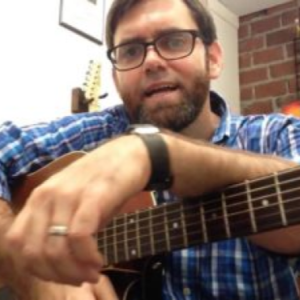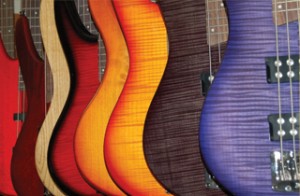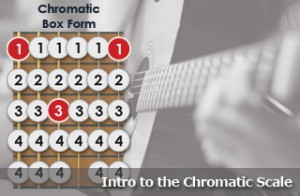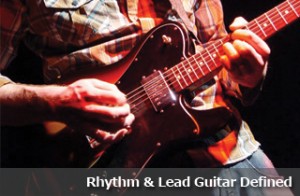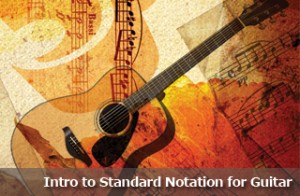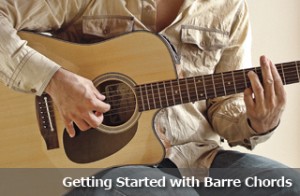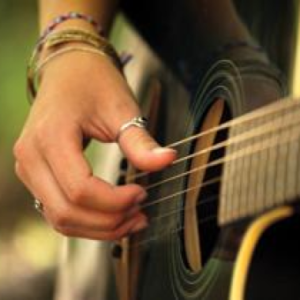Few rock & roll songs are as iconic and universally known as “We Will Rock You” by Queen. Every school kid knows how to stomp-stomp-clap on the gym bleachers as the masses chant along. This song works splendidly for a newbie guitar player to learn to transition between three chords in a changing chord progression. […]
Chord Voicing and Layering
Sometimes the same old chords get… well, boring. Every guitar player can pick up an axe and hammer away at G, C and D in first position. When you sit around the campfire with your pickin’ and grinnin’ friends, spice up your strumming by layering the chords with different voicings. What is voicing? Have you […]
Why Bother with Barre Chords?
Its reputation precedes it. Even non-guitarists are aware of its legend. You don’t want to meet it in a dark alley and you definitely do not want to get on its bad side. It will torture you, make you question everything you thought you knew and drive you to the edge of quitting. It is […]
Navigating the Fretboard
Have you ever gotten lost? Maybe as a little kid you found yourself separated from your parents in a store. What a horrible feeling to look up and realize that you are lost in a sea of clothes racks and mannequins. What about the first day at a new school? Do you remember the fear […]
Intro to the Chromatic Scale
The most basic scale is the chromatic scale. It is made of twelve notes that are a half step apart. The chromatic scale, beginning with E, is: E, F, F#, G, G#, A, A#, B, C, C#, D, D#. You can easily play a chromatic scale on the guitar by starting with an open string […]
Intro to the Major Diatonic Scale
The major diatonic scale is the most well-known scale in Western music. It is made of eight notes (including the repeated octave) with the interval arrangement of whole, whole, half, whole, whole, whole, half. This scale is sung with the syllables do, re, mi, fa, sol, la, ti, do in the solfège method. The major diatonic […]
Rhythm Guitar & Lead Guitar Defined
The guitar can be played two different ways – as a lead instrument or as a rhythm instrument. When playing a solo, an intro or a riff that stands out from the rest of the music, the guitar is being played as a lead instrument. When playing lead guitar, the guitarist is using scales, inverted power chords and stylistic techniques. […]
Intro to Standard Notation for Guitar
This is lesson 1 of “A Guide to Leavitt’s ‘A Modern Method for Guitar’” by LessonNotebook.com. Parents often ask, “Will my child learn to read music for guitar?” What they’re really asking is, “Will my student get a well-rounded musical education and become a real musician, not just a guitar player?” Students, on the other […]
Getting Started with Barre Chords
For most guitarists, learning to play barre chords is a rite of passage from the beginner level to the land of intermediate guitar playing. These chord forms are very handy because they are 100% moveable. They are based off of open chord shapes and allow access to a huge variety of chords by memorizing a […]
3 Introductory Picking Styles
Acoustic guitar players typically break down into two groups: strummers and pickers. Their playing preferences are pretty self-explanatory. Strummers like big, ringy chords. They want the acoustic guitar to fill the room with notes. Pickers like to arpeggiate chords, pulling out notes and putting together little licks and partial chords to embellish their playing. When […]
